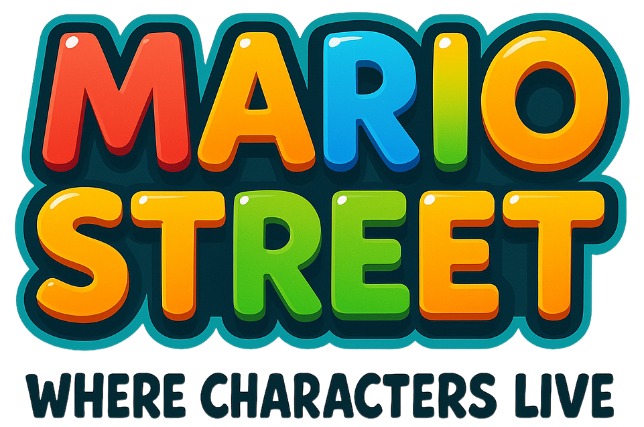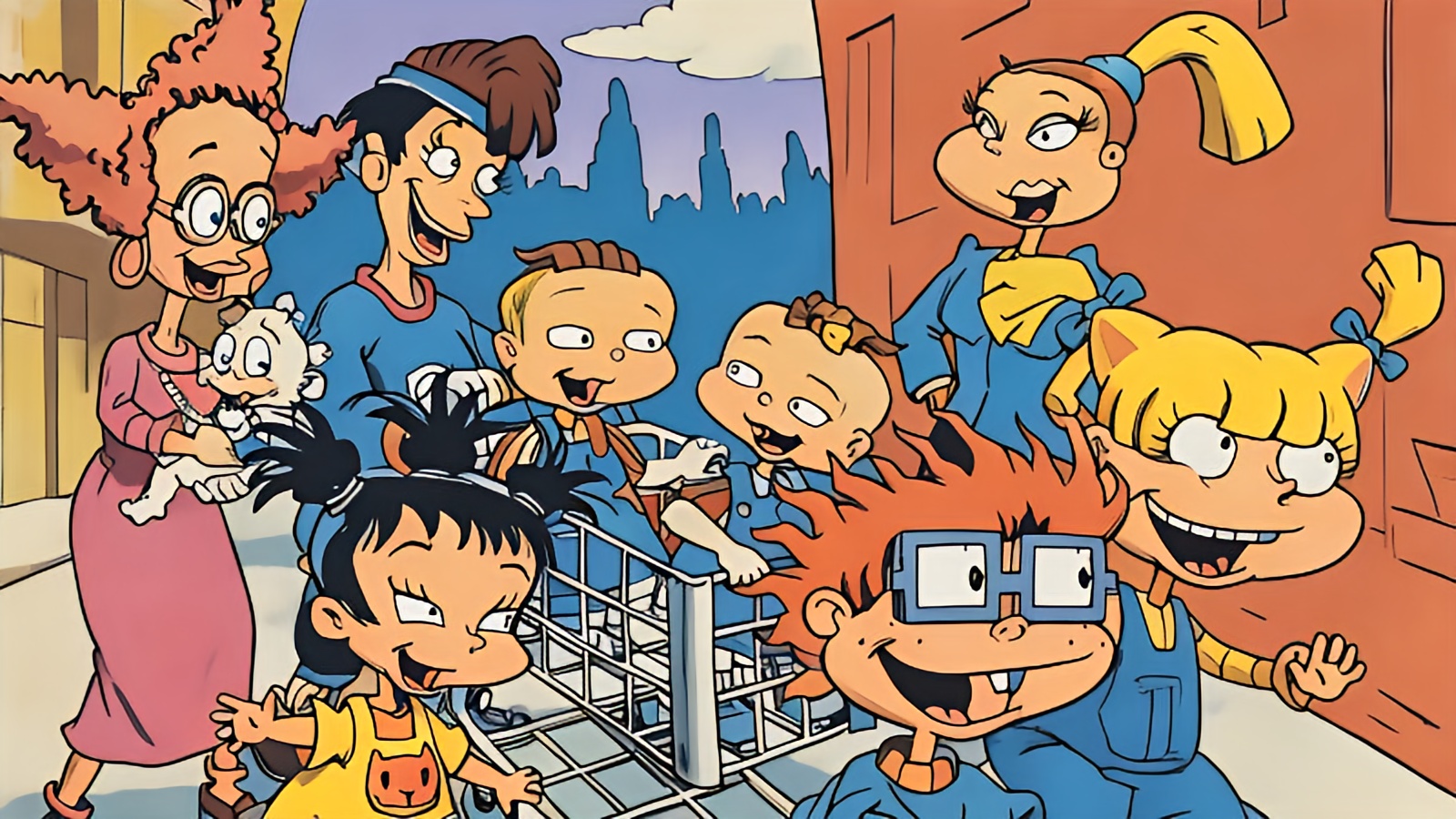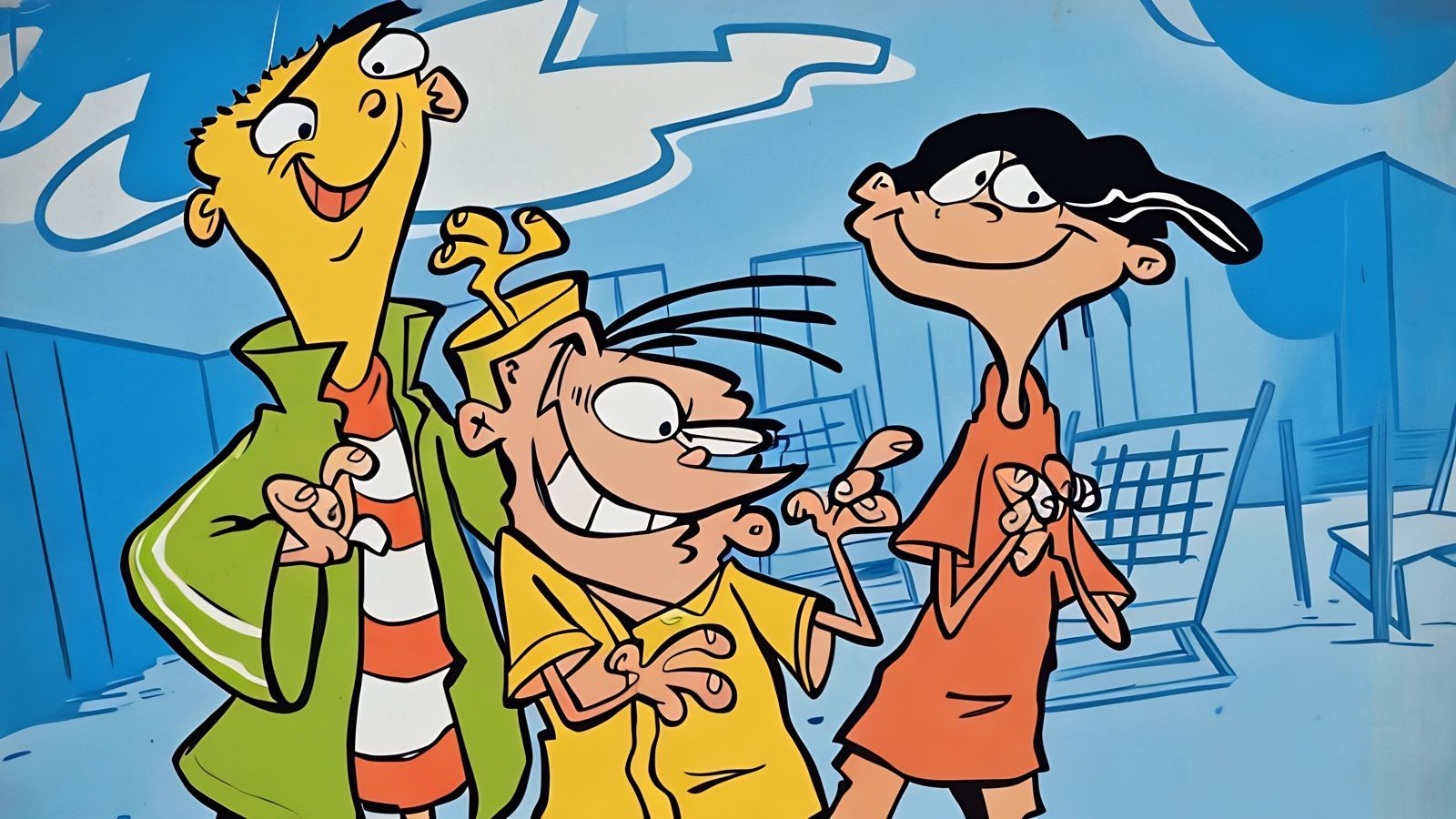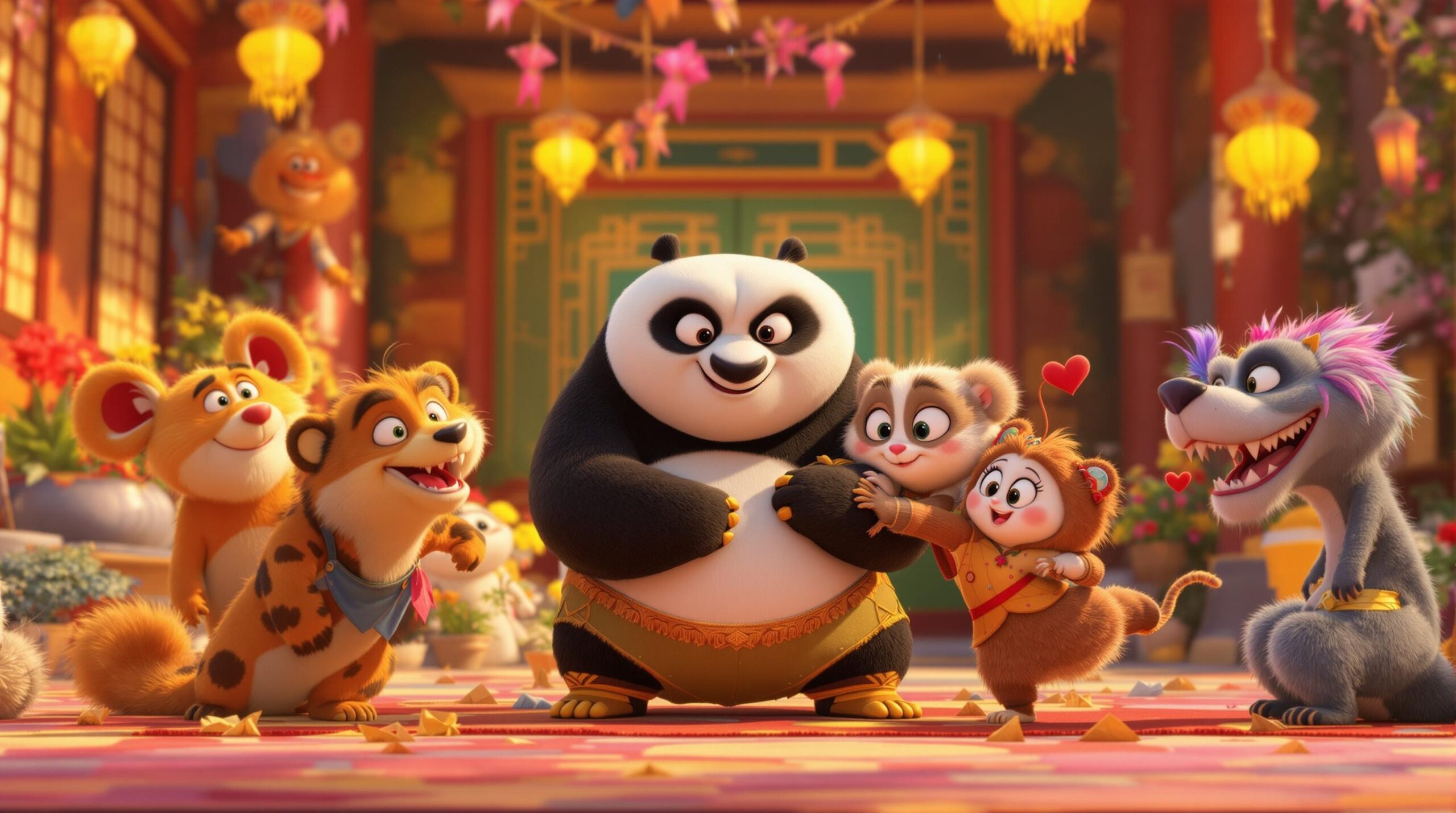If you grew up in the ‘90s, chances are Rugrats wasn’t just a show—it was the show. These animated toddlers weren’t just crawling around in diapers and mispronouncing words; they were shaping a generation of kids who saw the world as one big imaginative playground. Rugrats was colorful, clever, and surprisingly deep, offering life lessons and laughs in equal measure. But at the heart of the show’s impact were the characters—tiny legends whose personalities, quirks, and catchphrases defined childhood for millions. From fearless leaders to misunderstood villains, these are the top 10 Rugrats characters who defined ’90s kid culture.
#1: Tommy Pickles
Tommy Pickles wasn’t just the main character of Rugrats—he was the beating heart of every adventure, the glue of the diaper-clad crew, and arguably the most iconic bald baby in cartoon history. With his wide-eyed curiosity, unwavering bravery, and trusty screwdriver tucked into his diaper, Tommy embodied the limitless imagination and boundless optimism of the ’90s kid. Every episode with him at the helm was a new expedition—whether it was a wild backyard safari, a journey into the toilet bowl, or a covert mission to sneak cookies before nap time. Tommy made everything feel epic. Voiced by E.G. Daily, who brought a unique warmth and charm to the character, Tommy’s voice is burned into the memory of any millennial who spent their Saturday mornings glued to Nickelodeon. That nasal but earnest tone made him instantly lovable, and his catchphrase, “A baby’s gotta do what a baby’s gotta do,” was less of a silly slogan and more of a mantra for taking on the world—be it an imaginary dragon or a very real trip to the dentist. Tommy’s look was deceptively simple: a blue t-shirt, a diaper, and zero hair. But that clean design made him easy to draw on school notebooks and even easier to turn into action figures (which, let’s be real, every kid either had or desperately wanted). His wide, expressive eyes and signature grin radiated innocence and mischief, capturing that sweet spot between toddler chaos and childlike wonder. What made Tommy more than just a cartoon hero was how he represented the kid we all wanted to be—or thought we were. He wasn’t the strongest or the smartest, but he was always the first to step into the unknown. Whether he was crawling headfirst into trouble or standing up to bullies (including Angelica, who we’ll get to soon), Tommy was a symbol of gentle courage. He never needed a cape to be a superhero—just a plan and a group of loyal friends to back him up. One of the most touching aspects of Tommy’s character is his relationship with his baby brother Dil, introduced in The Rugrats Movie. Watching the usually confident leader struggle with jealousy and learn to love his sibling was one of the show’s most emotionally rich story arcs. It taught ’90s kids about change, family, and the very real challenges of growing up—even if you’re only two years old. A hidden gem that fans often forget is Tommy’s musical talent. In one of the more whimsical episodes, he takes on a rockstar persona in a fantasy sequence that gives him an electric guitar and stage presence to rival any ‘90s MTV act. It was ridiculous, over-the-top, and perfect—a reflection of how kids see themselves when the world is entirely shaped by their own imagination. Tommy Pickles wasn’t just a cartoon baby. He was a symbol of adventure, bravery, and childhood freedom. He encouraged kids to explore, to ask questions, and to face their fears—even if that fear was just the dark space under the couch. More than any other Rugrat, Tommy defined what it meant to be a ’90s kid: curious, courageous, and always ready to make something amazing out of the ordinary.
#2: Chuckie Finster
If Tommy was the brave heart of Rugrats, Chuckie was the anxiety-riddled soul that grounded the crew in reality—and for many ’90s kids, that made him the most relatable of them all. With his untamed red hair, oversized purple glasses, and a wardrobe that always looked like his dad dressed him in the dark, Chuckie was the poster child for nervous energy and lovable awkwardness. Voiced by the late Christine Cavanaugh, Chuckie’s voice was a unique mix of whine, wisdom, and warmth. He often served as the moral compass of the group, the little guy with big fears who still somehow found the courage to crawl forward. Every friend group has a “Chuckie”—the one who’s hesitant, always asking “Are you sure this is a good idea?”—but who still tags along because deep down, their loyalty outweighs their nerves. Chuckie had a tragic backstory that set him apart from the other Rugrats. His mom, Melinda, had passed away before the events of the show—a heavy concept for a children’s cartoon. But Rugrats handled it with remarkable sensitivity. Later episodes and the emotional TV special “Mother’s Day” gave Chuckie and viewers a beautifully tender moment that tackled grief in a way few kids’ shows dared. It showed us that it’s okay to be sad, scared, or unsure—and that those feelings don’t make you any less brave. In contrast to Tommy’s go-getter spirit, Chuckie was the voice of hesitation. Monsters under the bed? He was already under the covers. New food? Nope, too squishy. Going into the scary basement? Hard pass. But despite his doubts, Chuckie often ended up facing his fears anyway, proving that courage isn’t the absence of fear—it’s diapering up and doing it scared. Chuckie’s father, Chas Finster, mirrored much of Chuckie’s personality, creating one of the most endearing father-son duos in cartoon history. Their bond was gentle and sincere, and watching them fumble through life together was peak ’90s comfort. Later, when Chas married Kira and Chuckie gained a new sister, Kimi, it added a whole new layer of growth to his character—and showed that family doesn’t have to look traditional to be loving and complete. Chuckie was more than just comic relief or the butt of a “scaredy-cat” joke. He was the heart of Rugrats—the sensitive one, the thinker, the empath. In a world of confident kids and loud personalities, Chuckie made space for the quiet ones. And in doing so, he helped an entire generation of children realize that it’s okay to be scared, as long as you don’t let the fear stop you from living your best toddler life.
#3: Angelica Pickles
Angelica Charlotte Pickles was chaos in a purple dress. The first and arguably most infamous cartoon queen bee, Angelica defined the villain you loved to hate—and secretly wanted to be. With her wild blonde pigtails, patented brat energy, and an unmatched ability to manipulate adults with a single shriek, Angelica brought drama to every scene she entered. Voiced to bratty perfection by Cheryl Chase, Angelica wasn’t just a regular mean girl—she was a toddler tyrant in Barbie heels. And yet, beneath the spoiled screams and endless lies was a character far more complex than she seemed. Angelica wasn’t just a bully; she was a lonely kid trying to make sense of a world where she was both the oldest and often the most ignored. Her relationship with the babies was complicated. She tormented them with fake rules, wild exaggerations, and apocalyptic prophecies like “If you swallow watermelon seeds, a plant will grow in your tummy.” Yet she also stuck up for them when outsiders threatened the group. Angelica’s cruelty was often a test of power, but her rare moments of kindness made her more than just a two-dimensional villain. Angelica was also the show’s style icon. Her doll Cynthia, with her traumatized haircut and blank stare, was the unofficial mascot of ’90s weirdness. Kids either laughed at Cynthia or deeply related to her. Angelica’s obsession with Cynthia rivaled that of any pop star fanbase today—Cynthia was her confidante, her accessory, and her emotional support doll all in one. Let’s not forget Angelica’s musical career. “I need a new pair of shoes!” and her unforgettable “Cynthia’s Workout” video are proof that she was the original reality-TV toddler diva. Her attitude, confidence, and unmatched sass paved the way for every bossy cartoon girl that followed. Angelica Pickles taught us that it was okay to be bold, opinionated, and even a little obnoxious. But she also showed the loneliness behind the loudness. In a sea of sweetness, she was sour—but she was unforgettable.
#4: Phil and Lil DeVille
The DeVille twins were the peanut butter and jelly of the Rugrats universe—inseparable, delightfully messy, and just a little gross. With matching clothes, mirror-image faces, and an unbreakable sibling bond, Phil and Lil brought double the trouble and twice the laughs. They were the goofballs, the weirdos, the gleeful grime-lovers who dove headfirst into mud puddles and wore worms like jewelry. Phil and Lil were voiced by the brilliant Kath Soucie, who managed to make them distinct despite their similar looks and shared storylines. Lil was slightly more mature (emphasis on slightly), while Phil leaned into the chaos. But both had a shared love of anything squishy, slimy, or smelly. What made the twins iconic was their unapologetic weirdness. While Tommy was the leader, Chuckie the worrier, and Angelica the boss, Phil and Lil were the wildcards. They’d argue mid-adventure about who got to eat the bug or whose burp was better and then return to the mission like nothing happened. Their antics reminded kids that it’s okay to be gross, to be loud, and to be a little offbeat. Their mom, Betty DeVille, was a force of feminist energy, often decked out in a sweatband and tank top, always ready to smash the patriarchy and anyone’s expectations of what a mom “should” be. Her strong personality rubbed off on Lil, who occasionally clashed with Phil when she wanted to express her individuality. These subtle moments of twin tension added depth to what could’ve been a gimmicky duo. One of the more underrated dynamics was how fiercely loyal Phil and Lil were—not just to each other but to the rest of the group. When push came to shove, the twins were all in, ready to back up Tommy or stand against Angelica’s tyranny. In a time when cartoons often portrayed twins as either creepy or indistinguishable, Phil and Lil stood out. They were loud, loving, and hilariously strange—and ’90s kids adored them for it.
#5: Dil Pickles
Dil Pickles, Tommy’s baby brother, crawled into our lives during The Rugrats Movie, and his arrival marked a major turning point in the series. At first glance, Dil was just a drooling, gurgling infant who caused more chaos than he was worth. But to ’90s kids, Dil represented a very real and relatable experience: what happens when a new sibling enters the picture and throws everything into adorable disarray? Dil didn’t speak—at least, not in full sentences—but his presence was loud. He cried, he pooped, he yanked hair. His unfiltered baby behavior was a crash course in siblinghood for both the Rugrats and their audience. Watching Tommy struggle with jealousy, frustration, and eventually acceptance of Dil was one of the show’s most heartfelt and honest arcs. Interestingly, Dil’s name came from a running joke—Pickles and Dill, a pun that flew over many kids’ heads at the time but gave adults a quiet chuckle. Despite being the youngest, Dil made an impact. He wore wild, mismatched baby clothes, had a shock of spiky hair, and wielded a bottle like a blunt-force object. Though he initially upset the group dynamic, Dil eventually grew into a lovable wildcard. He wasn’t just the “baby” of the babies—he was a new lens on the world. Watching the older Rugrats try to interpret his babbles and squeals led to some of the show’s most imaginative misunderstandings. Dil also became a standout in All Grown Up!, where he transformed into an eccentric, musically inclined oddball. His evolution from slobbery sidekick to quirky tween genius made him one of the more interesting long-term character arcs. For any ’90s kid who had to suddenly share their parents’ attention with a new baby, Dil was both a mirror and a mentor. He taught us patience, empathy, and that sometimes, love grows in the middle of chaos.
#6: Susie Carmichael
If Angelica was the chaos, Susie Carmichael was the calm, cool, and compassionate counterbalance. Introduced a bit later in the series, Susie quickly became a fan favorite and a beacon of positivity—not just for the Rugrats, but for every ’90s kid who needed to see what true confidence looked like in a character who wasn’t bossy or mean. She was proof that you could be strong and sweet, outspoken and kind. Susie was voiced by Cree Summer, whose signature charm brought the character to life with warmth and dignity. Dressed in fun, colorful outfits with her natural curls tied up in buns, Susie radiated joy and style. She loved singing, dancing, and helping her friends solve problems, and she never hesitated to call Angelica out when she went too far—often being the only one brave (and mature) enough to do so. What made Susie so iconic wasn’t just her intelligence or courage—it was how effortlessly she owned who she was. She was one of the first Black female cartoon characters many ’90s kids saw portrayed in a positive, empowered light. Her family, the Carmichaels, were also portrayed with depth, warmth, and success, giving Susie a strong foundation that explained her grounded nature. Her mom was a doctor, her dad a TV writer, and their household was always buzzing with love and culture. Susie was also fiercely talented. Whether she was belting out a tune or solving a mystery the other Rugrats couldn’t wrap their tiny brains around, Susie made being smart look cool. She inspired kids to speak up, be proud of their roots, and always stand up for what’s right—even if you’re the smallest voice in the room. Her presence in All Grown Up! only amplified her greatness. She grew into a confident performer, a loyal friend, and still had that rare balance of humility and flair. Susie Carmichael didn’t need the spotlight—but she earned it anyway.
#7: Reptar
While not technically one of the “main” Rugrats, Reptar—giant green dinosaur, hero of kids, and destroyer of cities—was absolutely essential to the show’s DNA and a cultural icon of ’90s kid-dom. Reptar was everywhere—on cereal boxes, in ice shows, in video games, on lunchboxes. To Tommy and the gang, Reptar was the ultimate symbol of bravery and coolness. To kids watching at home, he was the Godzilla-meets-Superman figure we all wanted to ride into battle. Reptar didn’t speak much (beyond the occasional roar), but his presence was mighty. Whenever the babies imagined epic tales—space battles, post-apocalyptic wastelands, epic battles of good vs. evil—Reptar was usually the centerpiece. He represented childhood obsession in its purest form. Every kid had that toy or character they clung to. For the Rugrats, Reptar was it. One of the most memorable Reptar moments came in Rugrats in Paris, where a life-sized Reptar robot played a major role in the plot. That massive, clunky machine was a child’s dream made real—chaotic, colorful, and completely unnecessary in the best way. Watching the babies take control of it was like watching every kid’s power fantasy unfold on screen. Reptar also had his own musical (“Reptar on Ice!”), his own candy bars, and more merchandise in-universe than most real-world franchises. He was parody, homage, and original all in one. The creators of Rugrats used him to reflect how kids worship larger-than-life heroes—and how marketing seeps into childhood. But whether he was smashing cardboard cities or melting hearts, Reptar roared his way into pop culture history.
#8: Stu Pickles
If you ever wondered what kind of adult would raise someone like Tommy Pickles, look no further than his dad, Stu. Equal parts inventor, insomniac, and lovable disaster, Stu Pickles was the stressed-out creative genius who accidentally built baby rockets and malfunctioning toys at 3 a.m. because “I’ve lost control of my life.” Sound familiar, millennials? Stu was a toy designer by trade, which made him the perfect cartoon dad for a show all about baby imagination. His wild inventions often became the centerpieces of the Rugrats’ adventures, even if they were meant for entirely different purposes—like the infamous Reptar Wagon or the flying crib mobile gone rogue. He often wore a lab coat or polo shirt, had wild purple hair, and constantly looked like he hadn’t slept in three days. His attempts to balance work, family, and chasing his creative dreams felt increasingly relatable as fans grew up. The internet has since turned Stu into a meme icon, particularly with quotes like “Because I’ve lost control of my life” or his infamous chocolate pudding breakdown. Gen Z and millennials still cite him as the patron saint of burnout. Stu’s dynamic with his brother Drew (Angelica’s dad) added a layer of sibling rivalry that mirrored the differences between Tommy and Angelica. Stu was the dreamer; Drew the practical guy. But while Drew was often frustrated with Stu’s irresponsibility, it was clear that Stu’s heart was always in the right place. More than just a goofy background character, Stu symbolized the creative parent—the one who wasn’t perfect, but who gave his kids the freedom to dream, explore, and get a little messy. And in the end, that was all part of the magic.
#9: Kimi Finster
When Kimi joined the Rugrats universe in Rugrats in Paris, she was a breath of fresh, fearless air. As Chuckie’s soon-to-be stepsister, Kimi brought a boldness that contrasted beautifully with his timidity. She was adventurous, outspoken, and completely unafraid to challenge authority—whether it was an adult or a baby-dictator like Angelica. Voiced by Dionne Quan, Kimi was spunky and kind, with a distinctive purple hairdo and a fearless sense of fashion (yes, she wore leather in preschool). Her introduction marked a major shift in the series—new setting, new dynamics, new faces—but fans quickly fell in love with her. Kimi pushed Chuckie to take more risks and opened him up to a bigger world. Their sibling bond, while new, grew organically and sweetly, reflecting the evolving idea of what family looks like. Kimi was raised by her single mom, Kira, before they both became part of the Finster family. It was a great representation of blended families and international backgrounds, adding more depth and diversity to the show. In All Grown Up!, Kimi matured into one of the coolest teens in the group. Artistic, edgy, and empathetic, she became a symbol for individuality and expression. For a lot of kids, especially girls who didn’t feel like they fit into traditional molds, Kimi was a much-needed role model. She proved that being the “new kid” didn’t mean staying on the sidelines—and that sometimes, it’s the outsiders who become the most unforgettable.
#10: Didi Pickles
No top 10 Rugrats list would be complete without Didi Pickles, the quintessential ‘90s cartoon mom. With her towering red hair, round glasses, and bright patterned dresses, Didi was a mix of nurturing, neurotic, and fiercely loving. She was the soft-spoken foil to Stu’s chaos, and she tried so hard to raise her children “by the book”—literally. The parenting books. All of them. Didi worked as a part-time schoolteacher and was often seen referencing child psychology or relying on advice from her hero, Dr. Lipschitz (whose theories were usually hilariously off-base). She was always trying to do the right thing, even when that meant overthinking every toddler sneeze or existential tantrum. What made Didi iconic to ’90s kids was how real she felt. She wasn’t the perfect TV mom. She doubted herself, had messy moments, and occasionally got frazzled by the whirlwind of babies, family, and her overbearing parents. And yet, she always showed up—ready with a hug, a sandwich, or a reminder that “Tommy’s just going through a phase.” Didi Pickles represented the gentle, grounding adult presence in the Rugrats’ chaotic universe. She was firm but loving, quirky but wise. And while she may not have been the loudest voice in the room, her warmth and compassion left a lasting impression on everyone who watched. The magic of Rugrats was never just in the talking babies or wild toddler escapades—it was in the unforgettable characters who defined what it meant to be a ’90s kid. These ten legends each brought something special to the table: courage, humor, weirdness, wisdom, and heart. They helped us see the world through wide, curious eyes—and showed us that growing up doesn’t mean letting go of imagination. Whether you were a brave Tommy, a nervous Chuckie, a wild Phil or Lil, or even a mini Angelica in training, Rugrats was more than a cartoon. It was a mirror to our own messy, magical childhoods—and these characters were the ones who made it unforgettable.



